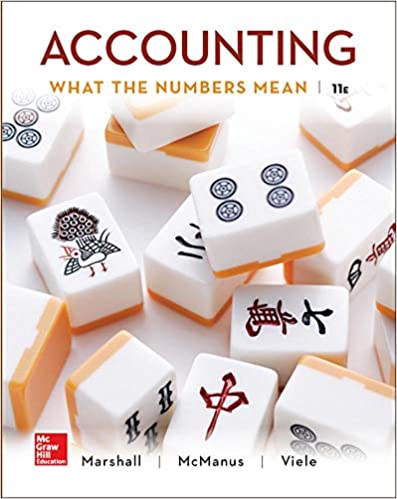
Accounting: What the Numbers Mean 11th Edition by Wayne McManus,Daniel Viele,David Marshall
Edition 11ISBN: 978-1259535314
Accounting: What the Numbers Mean 11th Edition by Wayne McManus,Daniel Viele,David Marshall
Edition 11ISBN: 978-1259535314 Exercise 18
Cost flow assumptions-FIFO and LIFO using a periodic system Mower- Blower Sales Co. started business on January 20, 2016. Products sold were snow blowers and lawn mowers. Each product sold for $1,400. Purchases during 2016 were as follows:

The December 31, 2016, inventory included 10 blowers and 25 mowers. Assume the company uses a periodic inventory system.
Required:
a. What will be the difference between ending inventory valuation at December 31, 2016, under the FIFO and LIFO cost flow assumptions? (Hint: Compute ending inventory under each method, and then compare results.)b. If the cost of mowers had increased to $960 each by December 1, and if management had purchased 30 mowers at that time, which cost flow assumption was probably being used by the firm? Explain your answer.

The December 31, 2016, inventory included 10 blowers and 25 mowers. Assume the company uses a periodic inventory system.
Required:
a. What will be the difference between ending inventory valuation at December 31, 2016, under the FIFO and LIFO cost flow assumptions? (Hint: Compute ending inventory under each method, and then compare results.)b. If the cost of mowers had increased to $960 each by December 1, and if management had purchased 30 mowers at that time, which cost flow assumption was probably being used by the firm? Explain your answer.
Explanation
Periodic inventory system:
Under period...
Accounting: What the Numbers Mean 11th Edition by Wayne McManus,Daniel Viele,David Marshall
Why don’t you like this exercise?
Other Minimum 8 character and maximum 255 character
Character 255


